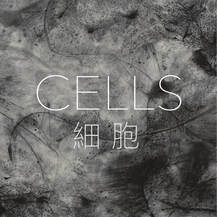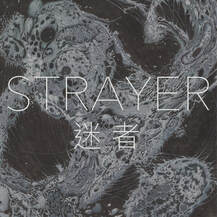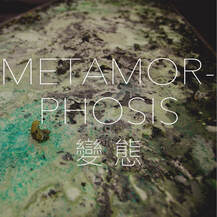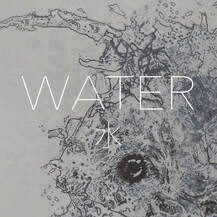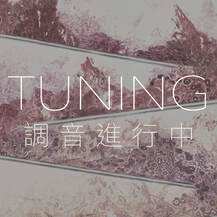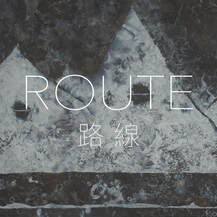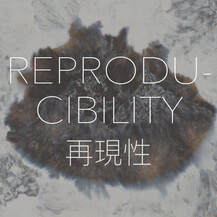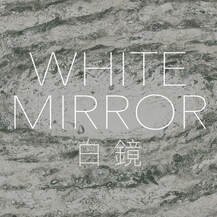|
LIFE IS MEANT TO BE MESSY 集 亂 為 序 |
|
|
|
Life is meant to be messy
Chloe CHOW Placing the approximately 37.2 trillion cells of the human body one by one under a microscope to scientists may well be simply a matter of time and technology. The latest scientific research shows that only 43% of those 37.2 trillion cells belong to human, the rest belong to microorganisms. Creating with the cell images of different organisms is Ling Pui Sze’s approach to perceive the macro world from a microscopic origin. Images of cells have been the main material in Ling’s works over the years. In early series, such as Water, Cells, and Reproducibility, she used images of cells of organisms and plants found on the internet. The images were first printed on Xuan paper, then torn up, reassembled, and finally, shaded with water on the canvas to merge the edges and seams. She reassembled and reconnected the cell fragments by scrutinising the dots, lines and planes of those cells and trusting her intuitions towards nature, which conveys her comprehension and imagination of those unknown organisms. While these new constructs arranged according to her non-scientific logic have a haphazard, deconstructed appearance, they also harness the potential of art to explore and even inspire in turn the scientific inquiry that has influenced her creation. Could her methods of reassembly and collage be similar to the practices scientists use in genetic modification experiments? Moving from the exteriority of the world to the interiority of the self, Ling’s new series of works, Tuning and White Mirror, reflect the shift in employing images of the artist’s cells under microscopes and her X-rays, obtained from the frequent body examinations in recent years, as the materials for creation. Fibrous washi paper has also been used. If Xuan paper resembles a healthy body, then washi resembles an ill one. Ink requires more time to penetrate and be absorbed by washi paper, similar to nutritions handled by an unwell body. Tearing the paper and organising it into place also takes longer. Instead of first collaging and then applying water, Ling shades each fragment before positioning it in the collage. Her compositions, as a result, are now planned and controlled to a greater degree than before. The addition of straight lines is a further intervention that allows her to direct the flow of the cells on the canvas. These new changes reflect Ling's intention of retracing her body’s rhythms and restoring tranquillity from turmoil through a process of introspecting the body and harmonising its rhythms. The retracing, however, does not mean to repeat a set pattern, but attempts to embrace the messiness in life and find equilibrium of oneself in the chaotic world. |
集亂為序
周麗珊 要將整個人體約37.2兆個細胞一一攤在顯微鏡下,在科學家眼中也許只是時間和技術性的問題。最新的科學研究更顯示,在這37.2兆個細胞中,當作只有43% 的細胞屬於人類,其他都是非人類的微生物細胞。利用各種生物的細胞圖進行創作,成為凌佩詩以小見大地感知世界的方式。 凌氏多年的創作一直以細胞圖為骨幹素材。早年如《水》、《細胞》和《再現性》等系列,便利用互聯網上尋獲的生物和植物等細胞圖。她先在宣紙上列印各種生物的細胞圖,然後把它們撕碎,在畫布上重組,最後以水暈染融和當中縫合的邊界和稜角。凌佩詩考究細胞的點線面,並以其對大自然的直覺性,重新拼砌和連接這些細胞碎片,藉此寄語她這些未知生物的理解與想象。有趣的是,這些經由她以非科學邏輯重構的細胞,呈現出破壞性的結構和雜亂無章狀態,卻也同時以藝術探索、甚至反向啟迪科學試驗的可能。凌氏拼貼和重組的方式,有沒有可能與科學家改變細胞基因的實驗方式異曲同工? 由外觀世界到內觀自身,凌氏一系列的新作《調音進行中》、《白鏡》轉向以近年因頻繁的身體檢查而獲得的顯微鏡細胞圖和X光造影圖為素材,並改用纖維密集的和紙。若果說宣紙就像健康的身體,那麼和紙就像抱恙的身體。墨水於和紙上有如養分於欠佳的身體般,需要更長的時間滲透和吸收,亦需更多的時間去撕開和梳理。凌氏一改以往先拼貼後整體暈化的方式,而是先逐片暈化後拼貼。畫幅的布局因此較前更受規劃和控制。她更以直線作為介入,刻意在畫幅上主導細胞的流動。這些新的轉變均呈現凌氏對重溯自身身體節奏的意圖,透過內觀身體、調和身體的節拍,使之由騷動回復寧靜。然而這種重溯並非依循固有的規律,而是嘗試擁抱生命的混亂性,在亂世中找到自己的平衡。 |
Copyright © Ling Pui Sze 凌佩詩
